Visual Mode
This guide covers the Browse objects feature which allows searching for CMDB resources that meet specific criteria. Enable Visual Mode to search for objects using the list view builder UI.
Start
Select the resource type (e.g. AWS EC2 Instances) in CMDB Navigator:
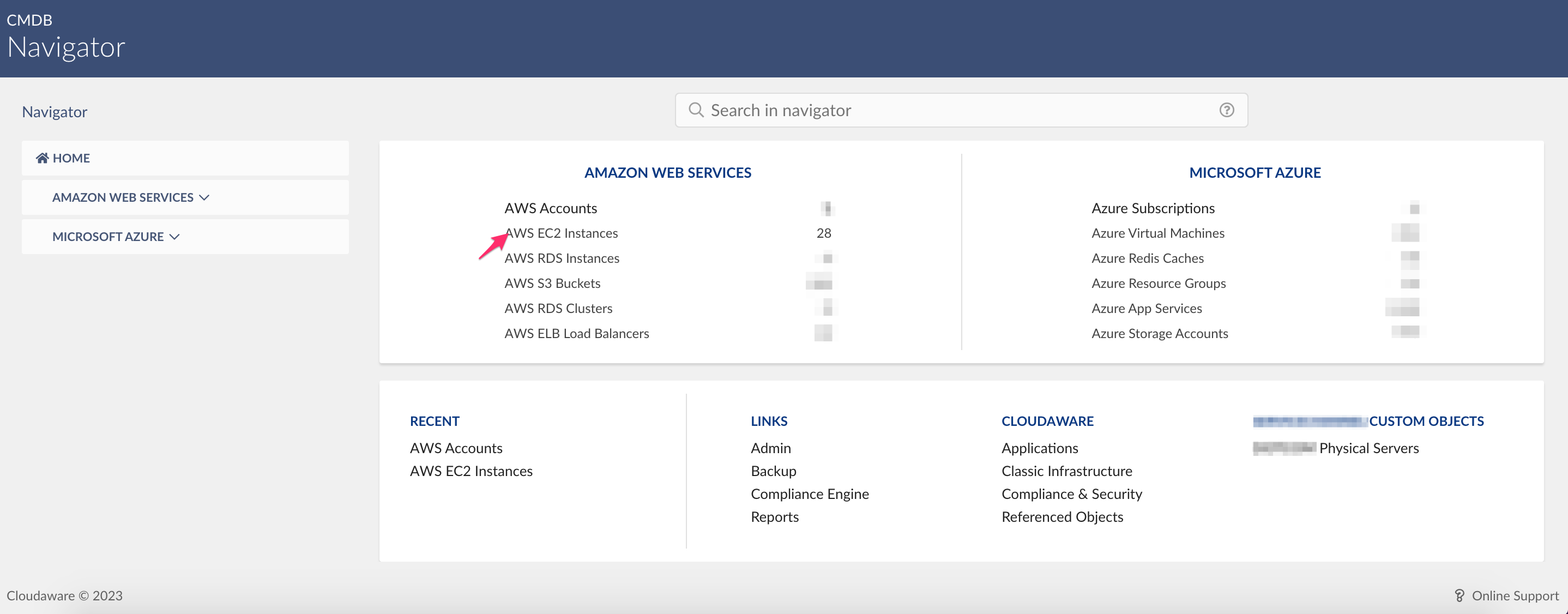
Click Browse Objects on the left. Select Visual Mode.

Set Up Filter Criteria
Click +ADD FILTER to add a new filter criteria.

A filter criteria consists of a field name, a logical operator and a value. You can select a field name from the drop-down list or type the name in the search bar:

Some fields have a list of related fields to drill down into (use > to select a related field):
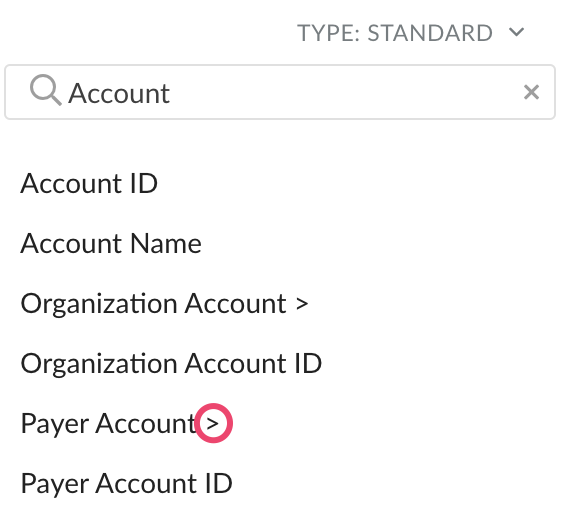 |  |
Click 'home' sign to go back to the general list of fields.
Based on the objects relationship, you can filter your search results by fields of a parent object:

Example: This example refers to the object type AWS EC2 Instances. We select AWS Account, a master object for AWS EC2 Instance, and retrieve its related field 'Account Name'. We can narrow the search scope by setting up a specific value or criteria, e.g., AWS accounts containing 'test' in their names will be excluded. Having added the field' State Name' along with the operator 'equals' and the value 'running,' we only search for all running instances.
Field Type
By default, the type 'Standard' is selected to display standard Cloudaware objects and their fields. To view the JSON data fields, select 'JSON field' type:

Use JSONPath expressions in the box 'Field JSON Path' to fine-tune your search:
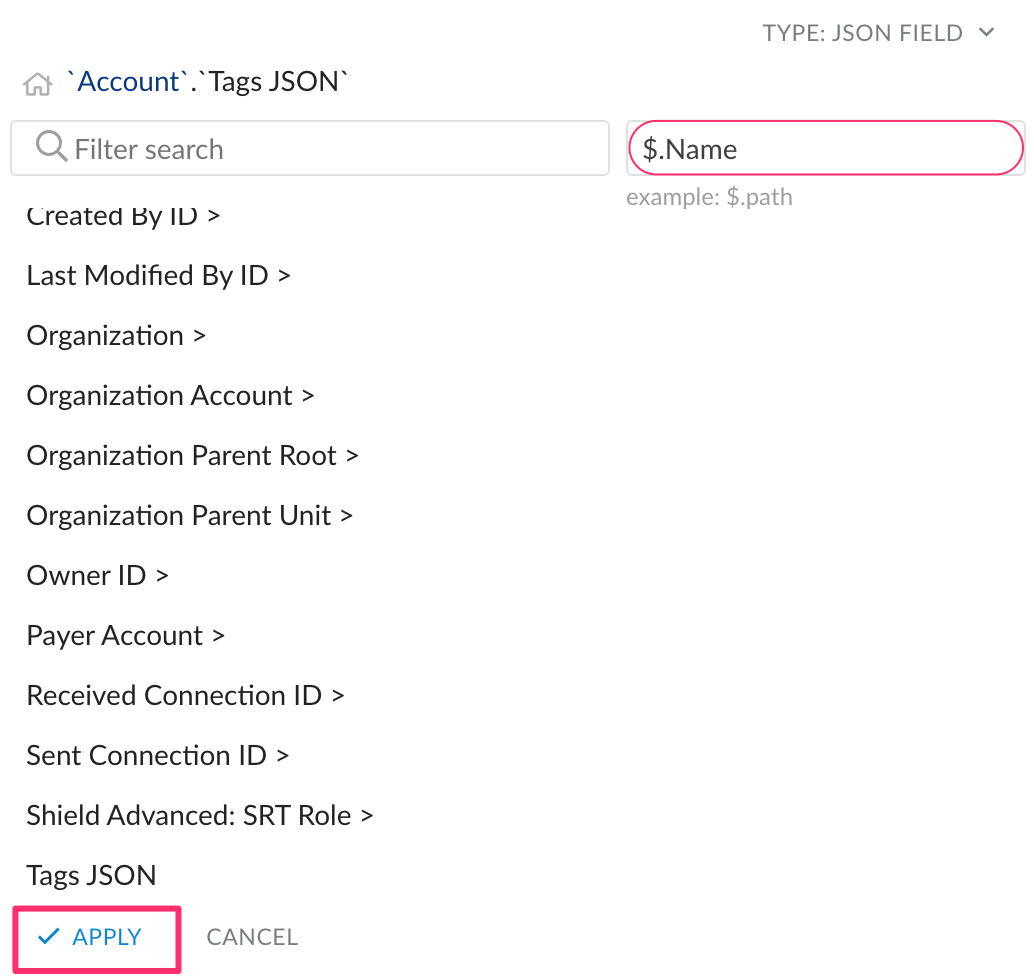
JSONPath expressions start with $ and can contain the dot- (a) or the bracket-notation (b) for input paths:
a) $.Fieldname[0].Fieldname
b) $["fieldname"]["fieldname"][0]["fieldname"] - where [0] is the number of an element in the array.
The element number can be replaced by the wildcard symbol * to refer to all elements: $[“Fieldname with whitespaces”][*]
Logical Operators
equals | Use for an exact match |
not equal | Use for an exact match with a certain value excluded |
greater than | Use when you want results that exceed the value you enter |
greater or equal | Use for results that match or exceed the value you enter |
less than | Use for results that are less than the value you enter |
less or equal | Use for results that match or are less than the value you entered |
contains | Use for fields that include your search string |
not contains | Use to eliminate records that don’t contain the value you enter |
like | Use to locate records that include the exact value you enter or type % to include a certain part of the value entered, e.g. |
not like | Use to locate records that exclude the exact value you enter or type % to exclude a certain part of the value entered, e.g. |
starts with | Use for results that start with a certain value |
Grouping Filters
Click +ADD FILTERS GROUP to create a group of filters.
Select the condition operator AND (all of conditions are true) or OR (any of conditions are true):
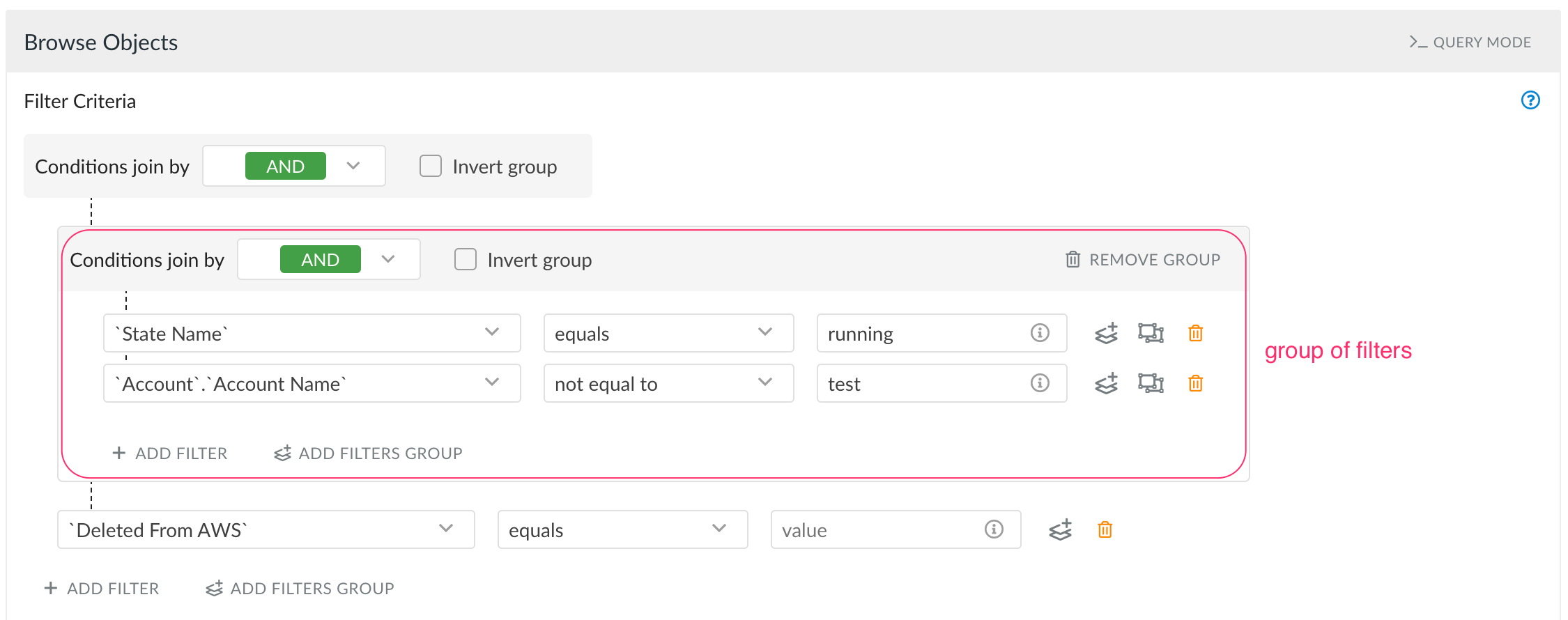
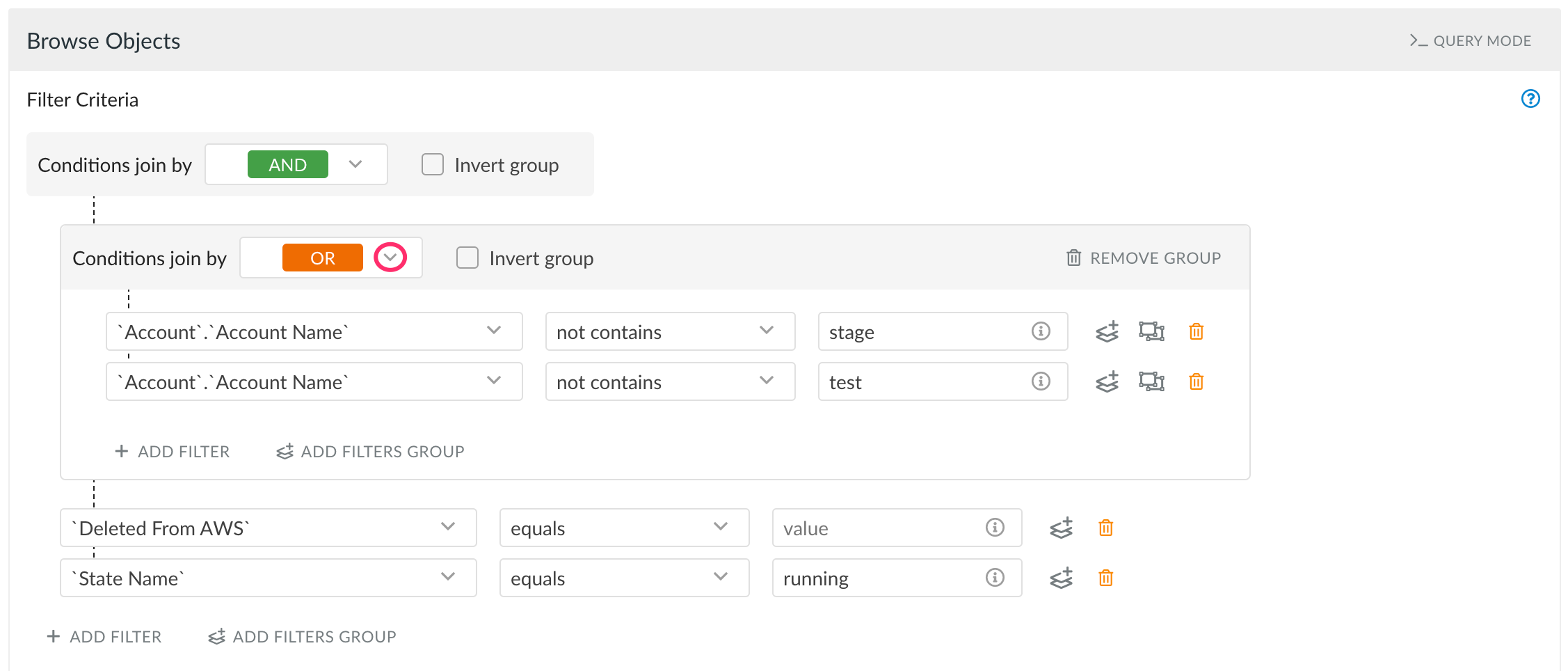
Click Create group with this condition to create a new group of filters based on a selected filter:
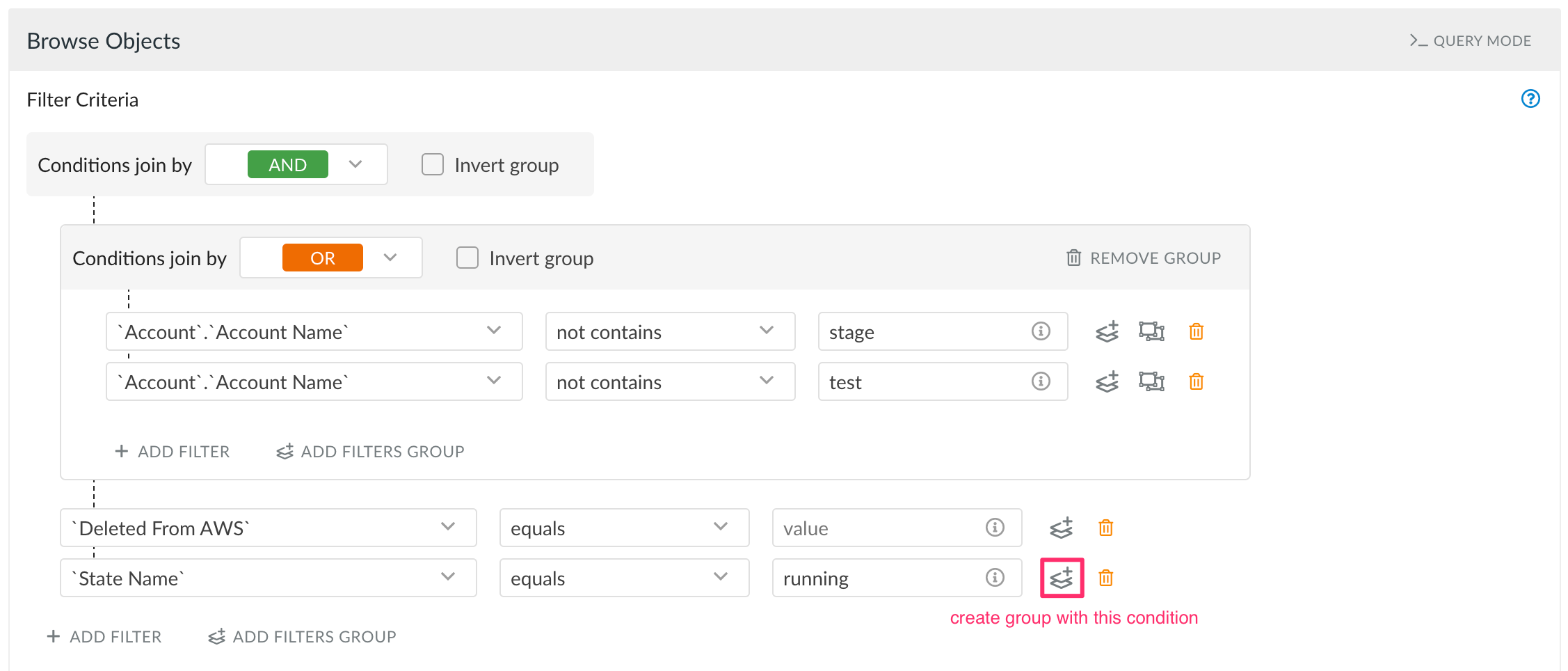
Click Extract from group to exclude a filter from the group of filters under question:
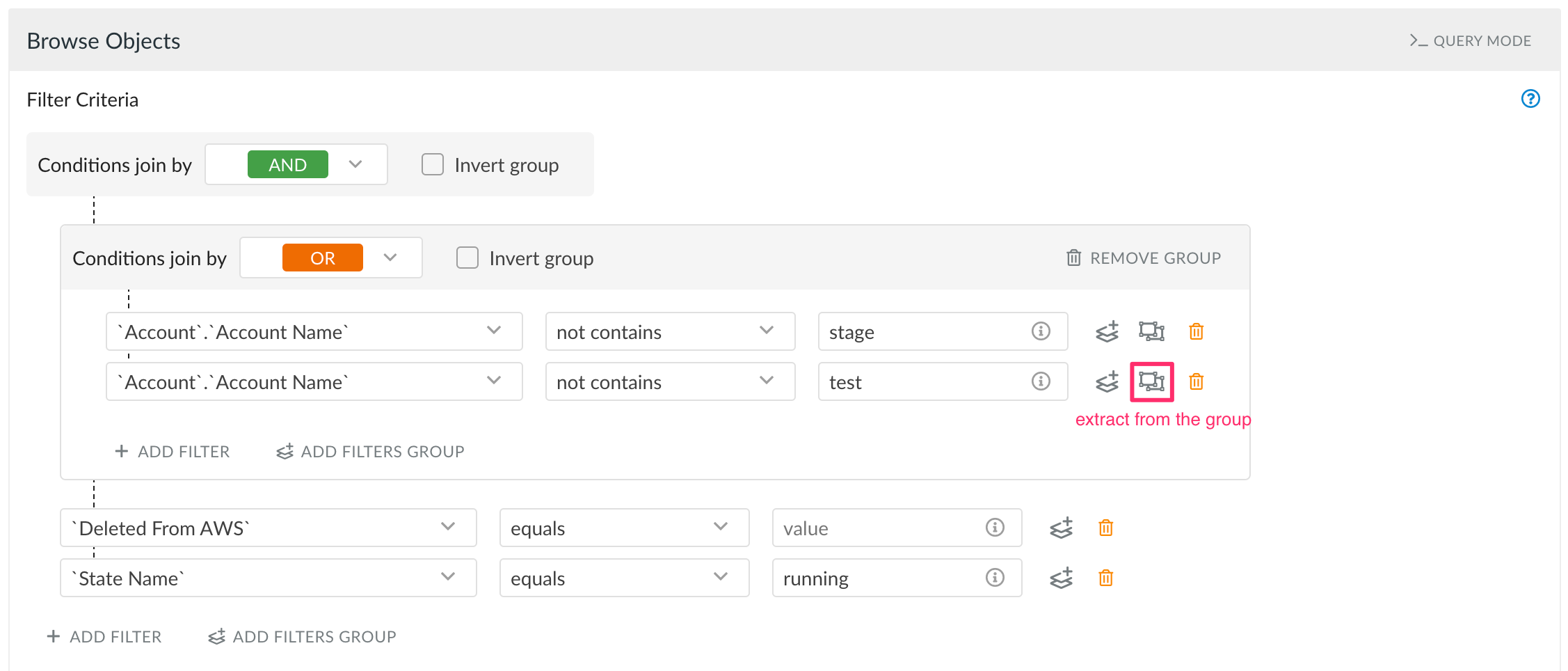
Using groups of filters and condition operators AND/OR, you can set up complex conditions in the section 'Filter Criteria':
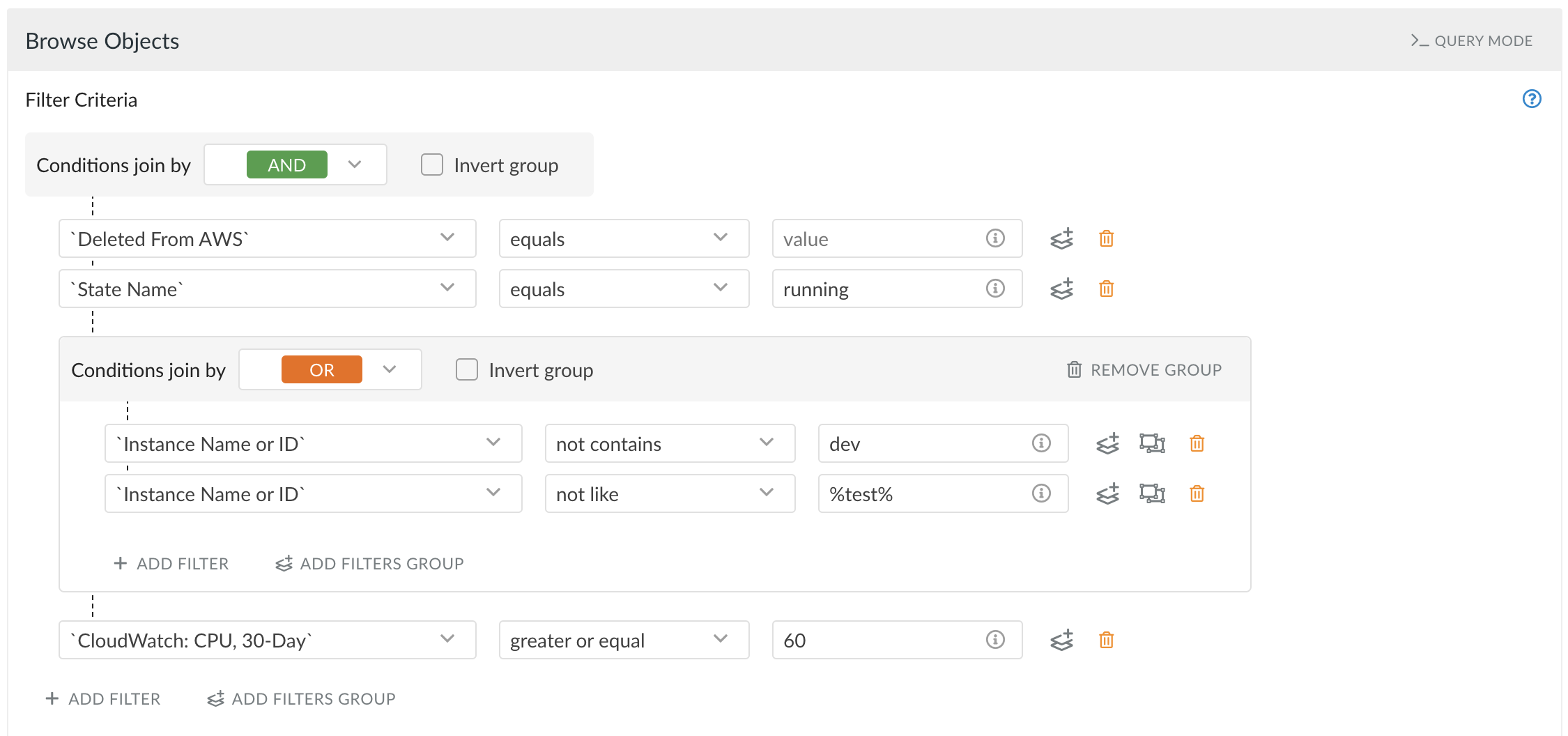
Pay attention to the check box Invert group: if checked, it inputs a negation to the meaning of all filters in the group.

Example: This example demonstrates a search for all instances present in AWS and running, but we also want to exclude the instances containing ‘test’ and ‘dev’ in their names. Instead of looking for appropriate operators with a negative value for each filter criterion, we group the required filters and apply negation to the whole filter group.
Set Up Available Columns
Add more columns to be displayed in the list of results. Type the field name in a search bar, drill down into master object folder and select a field from the list on the left.
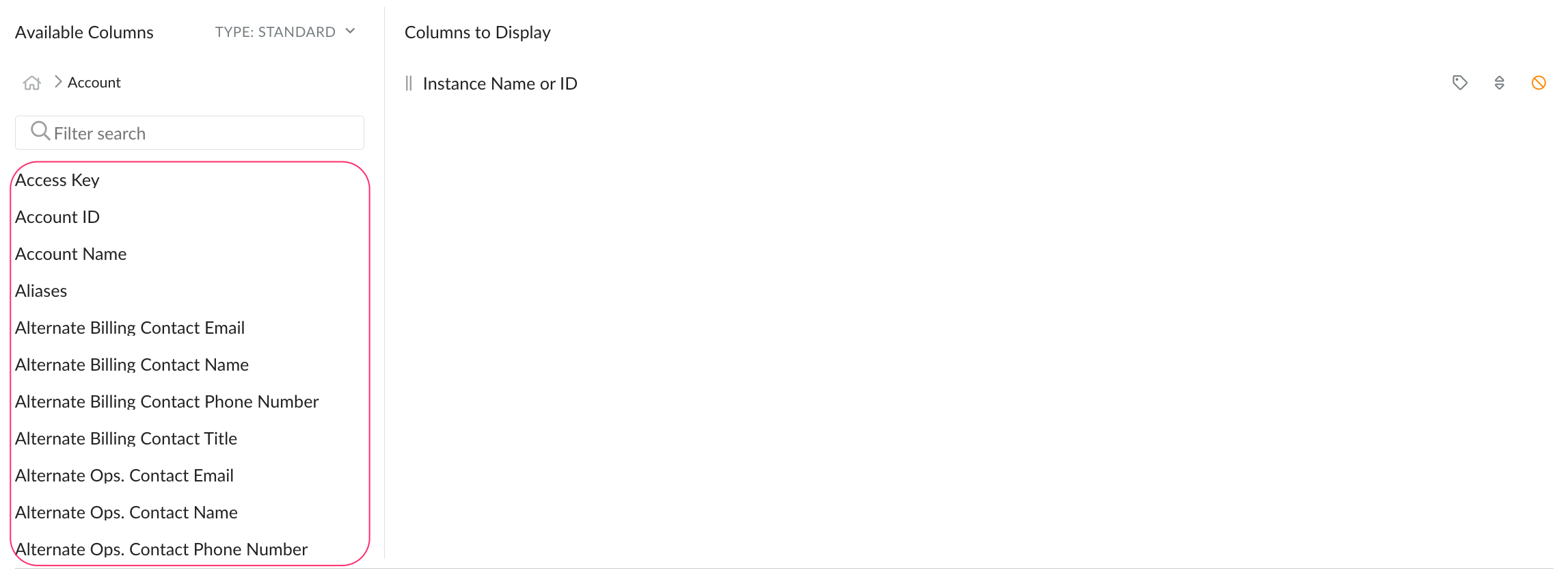
Click Add label to change a column name in the list of results :
 |  |
Click Add order to set up the the sorting order for assets in a column: ASC for ascending or DESC for descending.

Sorting Order Of Columns
Hover over two strips to drag a column up or down to manage the order of columns in the list of results:

Search
To initiate search, click SEARCH. The list of results will be available in the lower part of the canvas screen:

The following options are available under OPTIONS:
Save as New List View
Copy Link to This Query
Show Equivalent SOQL
Show Equivalent CURL
